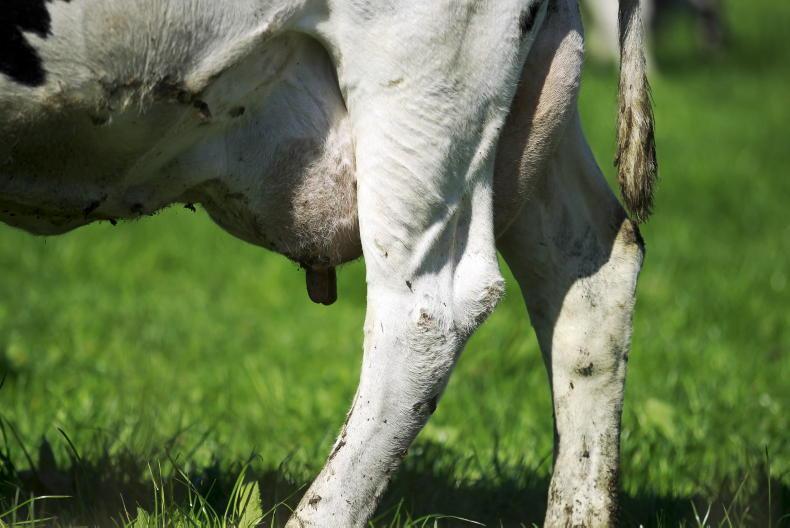Ireland has seen the largest milk price drop over the last year in Europe, according to the European Commission’s latest short-term outlook for EU agricultural markets in 2023 and 2024.
The report found that when comparing Ireland’s average milk price in December 2022 and the latest estimates for September 2023, there was a 43% decline in price.
Meanwhile, over the same nine-month period, the Commission found that French, Italian and Spain dairy farmers saw a milk price decrease of a much lower 10%.
Decline
Across the board, the Commission found that EU raw milk prices have been declining since the beginning of the year, but that the pace of the decline has slowed since the summer.
The EU raw milk average price in August was 25% below the peak in December 2022, at around €43.60/10kg.
While the Commission noted that due to more favourable weather conditions across Europe, feed costs started to decrease over the spring months, it highlighted that energy and fertiliser prices remained high and well above the average levels observed in the past, leading to tight margins for dairy farmers.
Output
Despite a decline in EU raw milk prices, the agricultural markets report found that EU milk output was 0.7% higher from January to July, compared with the same period in 2022.
But the evolution of raw milk supply remains very heterogenous across EU countries, the Commission noted.

Milk yields in Europe in 2024 will remain stable, according to the Commission's outlook.
“In some countries, lower prices are already accompanied with lower production,” the report read, citing the examples where this has been seen in Ireland, France and Italy.
However, in other countries such as Germany, Belgium and Poland, the Commission said higher milk output potentially contributed to the drop in raw milk prices as demand remained “less price-elastic”.
Cow numbers
The EU dairy cow kill from January to June 2023 remained below the level seen in 2022.
“Due to lower raw milk prices and high costs for important inputs, slaughterings could accelerate in the upcoming months. This could lead to a decline in the EU dairy cow herd similar to 2022 (-0.6%),” the Commission suggested.
On its outlook for 2024, the Commission report found that under the assumption of normal weather conditions, the increasing trend in EU milk yields is assumed to continue at a comparable rate, providing a stable raw milk supply for the dairy industry (+0.2%).
Ireland has seen the largest milk price drop over the last year in Europe, according to the European Commission’s latest short-term outlook for EU agricultural markets in 2023 and 2024.
The report found that when comparing Ireland’s average milk price in December 2022 and the latest estimates for September 2023, there was a 43% decline in price.
Meanwhile, over the same nine-month period, the Commission found that French, Italian and Spain dairy farmers saw a milk price decrease of a much lower 10%.
Decline
Across the board, the Commission found that EU raw milk prices have been declining since the beginning of the year, but that the pace of the decline has slowed since the summer.
The EU raw milk average price in August was 25% below the peak in December 2022, at around €43.60/10kg.
While the Commission noted that due to more favourable weather conditions across Europe, feed costs started to decrease over the spring months, it highlighted that energy and fertiliser prices remained high and well above the average levels observed in the past, leading to tight margins for dairy farmers.
Output
Despite a decline in EU raw milk prices, the agricultural markets report found that EU milk output was 0.7% higher from January to July, compared with the same period in 2022.
But the evolution of raw milk supply remains very heterogenous across EU countries, the Commission noted.

Milk yields in Europe in 2024 will remain stable, according to the Commission's outlook.
“In some countries, lower prices are already accompanied with lower production,” the report read, citing the examples where this has been seen in Ireland, France and Italy.
However, in other countries such as Germany, Belgium and Poland, the Commission said higher milk output potentially contributed to the drop in raw milk prices as demand remained “less price-elastic”.
Cow numbers
The EU dairy cow kill from January to June 2023 remained below the level seen in 2022.
“Due to lower raw milk prices and high costs for important inputs, slaughterings could accelerate in the upcoming months. This could lead to a decline in the EU dairy cow herd similar to 2022 (-0.6%),” the Commission suggested.
On its outlook for 2024, the Commission report found that under the assumption of normal weather conditions, the increasing trend in EU milk yields is assumed to continue at a comparable rate, providing a stable raw milk supply for the dairy industry (+0.2%).







 This is a subscriber-only article
This is a subscriber-only article










SHARING OPTIONS: